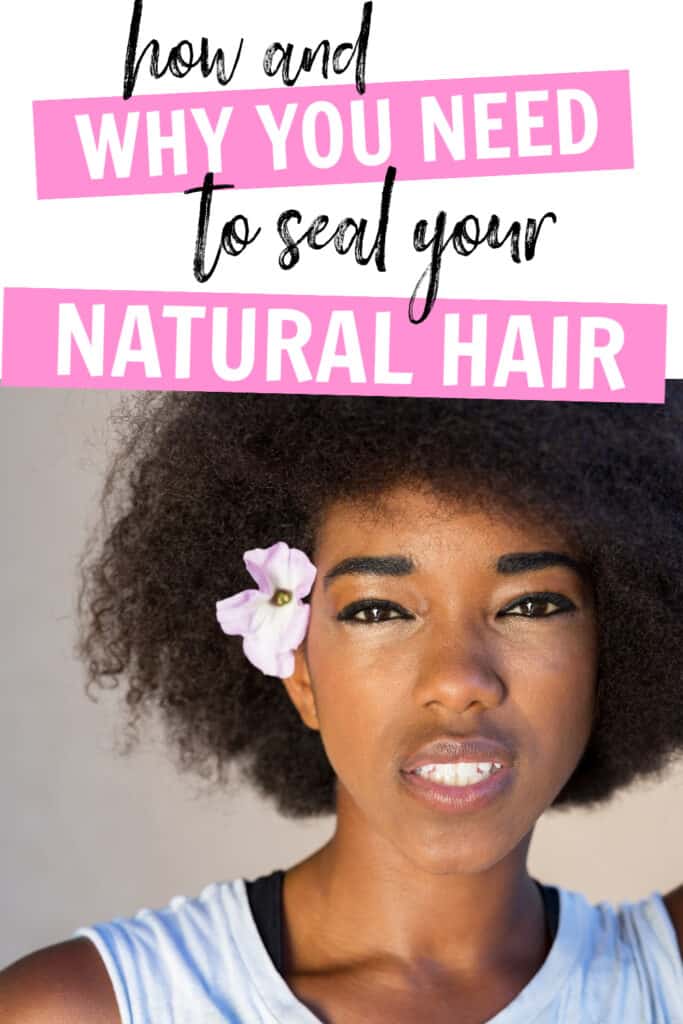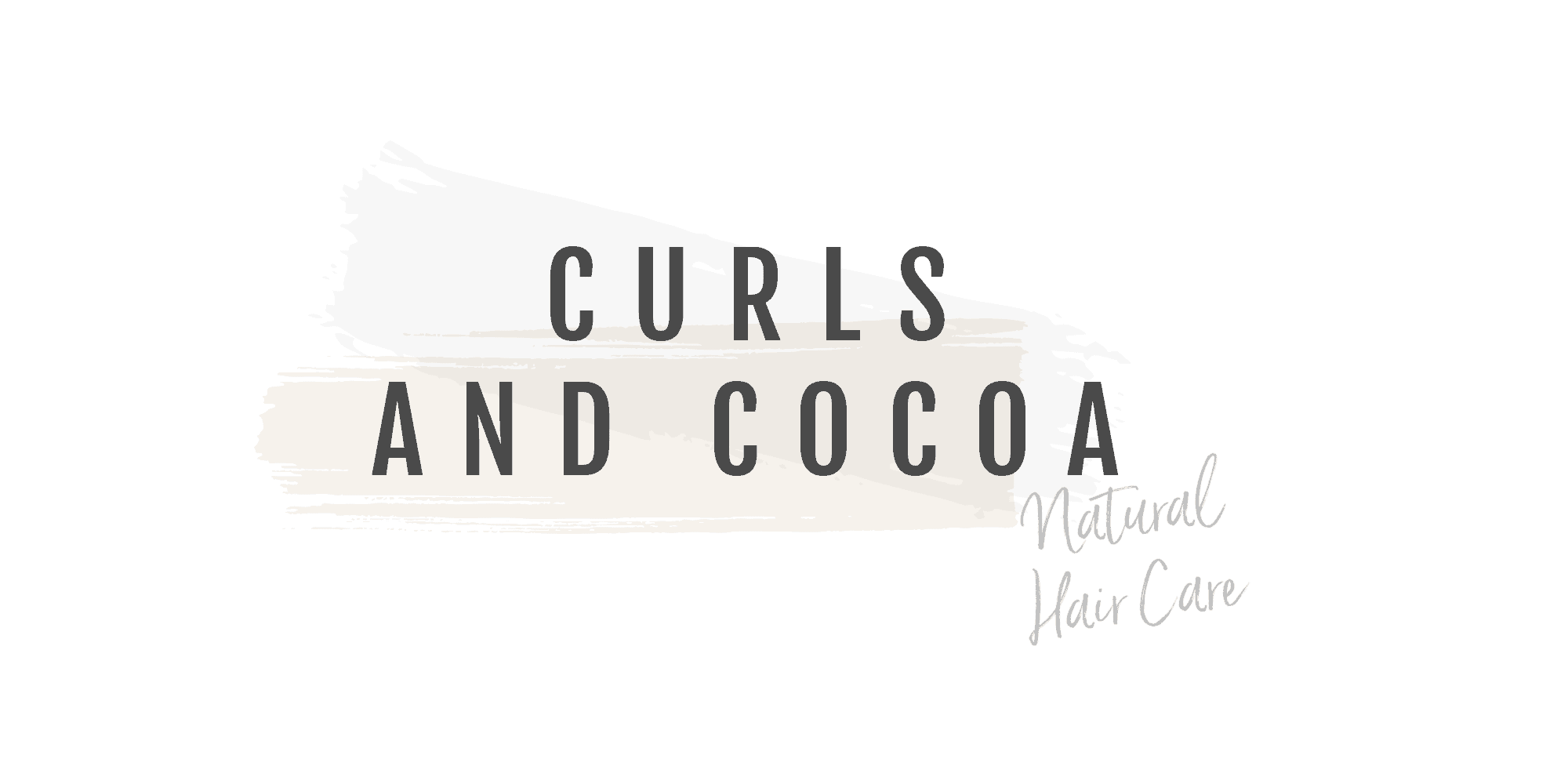Having natural hair is an amazing thing to have. It’s really beautiful and diverse and it can actually grow very long if you want it to.
The only thing with natural hair is that you have to learn how to properly take care of it. For many of us, that means learning things from scratch all over again. Myself included.
Learning how to seal in moisture is one of those things that you need to know.
Today we are going to look at the importance of sealing in moisture and what that really means for your hair.
***Please note that this site uses affiliate links if you would like to read the legal stuff you can find it here

What Does It Mean To Seal In Moisture?
Natural hair can very quickly become very dry. To avoid this happening we need to find creative ways to lock the moisture into our hair so that it doesn’t become dry during the course of the day.
There are different ways that you can choose to moisturise your hair but not all of them will necessarily make sure that that moisture will be locked into your hair.
When you find a way to trap that moisture into your hair it is called sealing in moisture.
It’s important to know when and how to seal moisture into your hair in order for it to be able to have the best chance at growth and health.
How To Seal In Moisture
The basics of moisturising your hair come from some type of liquid or water, preferably water. This can be done in a variety of ways but we need to also learn how to lock that moisture into our hair.
Here are 3 steps to making sure you are sealing in all that lovely moisture.
1. Water
Water is the only thing that can moisturise your hair. Let’s just get that straight.
Without the use of water, there is no other way to put moisture into your hair. It’s the same for a plant. You can put all the good nutrients into the soil but if you don’t give the plant water it WILL die.
It’s a good idea to regularly spritz your hair with water from time to time. I like to use a water spray bottle like this one because it sprays out such a fine mist it ensures that all of my hair is covered without having it dripping from water.
You can also do this in sections if you have a lot of hair. This will make sure that you are able to cover all of your hair without missing parts.
2. Product
Next, you need a good product that will work for your hair. Everyone’s hair is different and you will find that some products work better for you than others.
Seal With An Oil
Once your hair has been evenly sprayed with water we can choose an oil to help seal in the moisture.
When you use an oil to seal in moisture it basically provides you with a barrier between the environment and your natural hair.
This is what will help to keep the moisture locked into your hair.
There are specific oils that suit this purpose and we will take a look at them in just a moment.
Seal With A Butter
There are a variety of butters that you can use to help you seal in moisture. There is mango butter, shea butter, cocoa butter and many others but these are the more popular ones.
Butters tend to be a lot thicker in consistency than oil so it will give you an extra layer of protection for your hair.
Using a butter in your hair also has the added benefit of giving your hair shine too. Let’s be real for a moment, who isn’t here for the shine!
If you find that using all of the above steps is a little too much for you, you don’t have to use them all. You may find that just using water and oil is enough for your hair or water and a butter.
If your hair is of a looser texture, then you might find all the steps a little too heavy for your hair.
The LOC Method
The steps that we have just been through above are the steps of the LOC method. The loc method is one that is popularly used by many naturals because it works so well.
LOC stands for liquid, oil, cream in that order.
Although many people like this method some people prefer to switch it up a little by doing the LCO method which is Liquid, Cream, Oil.
For some people, they find that this works best. It really comes down to personal choice as to which works best for your hair.
Make Sure Your Hair Is Free Of Product
One thing to remember about using this method of sealing in moisture is that your hair will get to a point where it needs to be washed and clarified in order for it to continue to be effective to you.
If you don’t your hair will get weighed down with too much product buildup and the water that you use will no longer be able to penetrate your hair strands in order to be effective.
What’s The Difference Between Sealing Hair And Moisturising It
There is a difference between sealing your hair and moisturising it. The difference is an important one.
When you moisturise your hair you are making sure that your hair does not get dry. You can use a leave in conditioner to do this as long as the first ingredient is water (aqua).
Depending on your hair, the liquid that you apply at this stage may not be able to last and you may find that during the course of the day your hair begins to feel dry again.
Sealing the moisture into your hair gives a layer of protection to your strands to make sure the liquid that you applied lasts the duration that you need it to.
For some people sealing that moisture needs to happen every day and for some, every few days is sufficient enough.
Oils That Can Be Used To Seal In Moisture
As discussed earlier there are different oils that can be used to seal moisture into your hair but you have to know the right ones to use.
Some oils are moisturising oils and some are sealing oils. There is a difference.
Oils that help to seal your hair are:
Fractioned coconut oil and argan oil are some of the few oils that can both seal and moisturise your hair at the same time. This is because the molecules are small enough to penetrate the hair shaft.
How To Seal In Moisture In 4C Hair
You may already know this but 4C hair is known to be one of the dryest types of hair. This is because its tight coils make it difficult for the natural oils from the scalp to travel down the hair shaft.
If you have type 4c hair it’s a good idea to use the steps above to help seal moisture into your hair.
In addition to this, I would also add scalp massages to help distribute your scalp’s natural oils through your hair.
The natural oils that come out of your scalp are the best oil for your hair.
How To Seal Moisture In Low Porosity Hair
If you have low porosity hair then you may already know that the cuticles of your hair are already tightly closed.
When this happens it makes it hard for your hair to become properly moisturised.
To help your hair soak in moisture I would suggest using a heat cap like this one to open up the cuticles after washing.
Once this is done then you can begin to seal in the moisture using the technique above.
How To Seal Moisture Into High Porosity Hair
With high porosity hair, the cuticles tend to be wide open. This means that although your hair is able to take in moisture quite easily, it can’t hold on to it.
In order to seal your hair in this instance, I would suggest using a protein treatment. This will help to fill in the gaps on the hair shaft.
If you are going to use protein treatments, remember to balance it out with moisture otherwise you could face further problems.
After washing your hair, rinse it with cool water to help the cuticles to close. Once this is done you can then use the tips above to seal in the moisture that you have gained.
Final Thoughts On How To Seal In Moisture
As mentioned above learning how to seal in moisture is an important thing to do.
Knowing and understanding your own hair is equally as important because you need to know when something is overkill for your hair or not enough so you can tweak the method to work best for your hair.
What have you found best to help seal in moisture in your natural hair?
Related posts:
How to moisturise and seal low porosity hair
How to keep hair healthy and hydrated
Can you over moisturise your hair?




